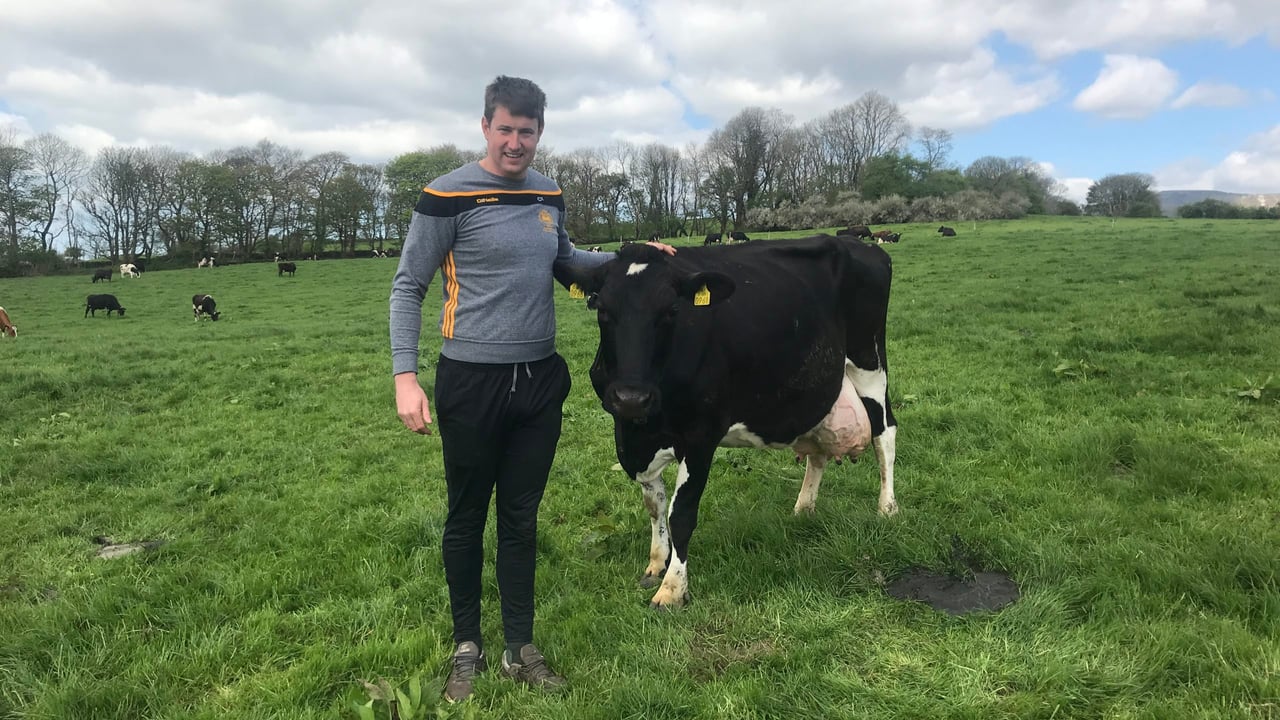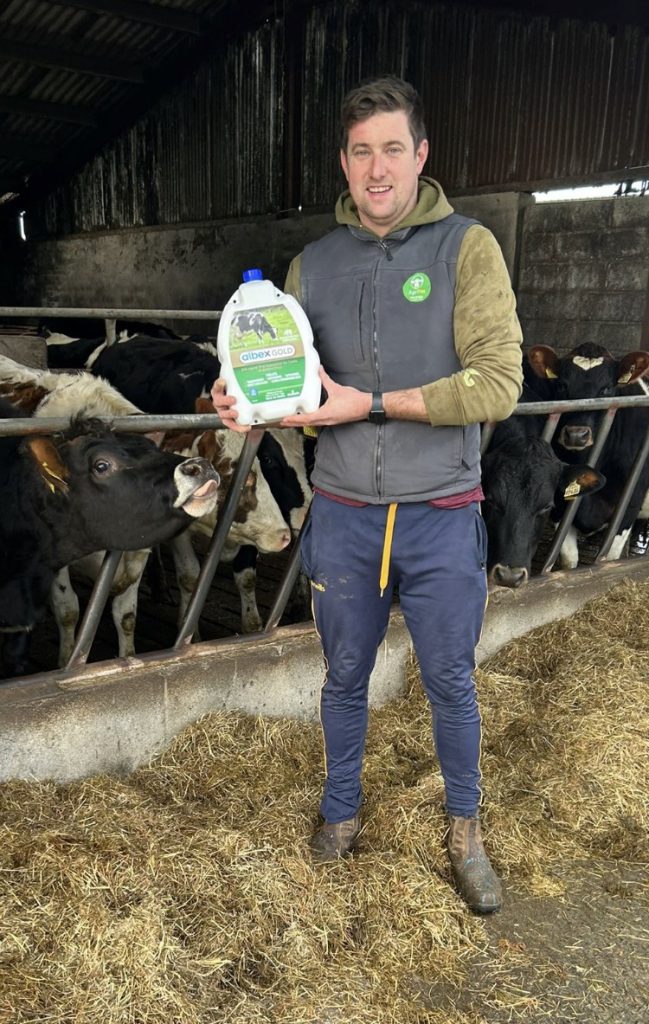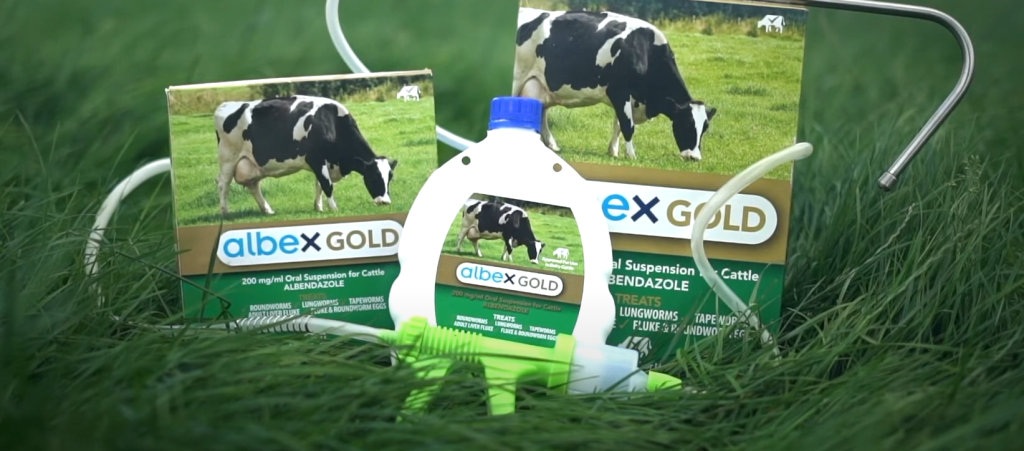Sponsored Article
Oral wormer drench 'has been a gamechanger for us' - Sligo farmer
Sponsored Article
Co. Sligo farmer Christopher Tuffy spoke about his farm's performance over 2025 and how he intends to drench his cows to continue that performance into 2026.
Tuffy is milking 155 cows on a 150ac block alongside a 100ac out-block used for heifer rearing and silage making.
After returning from New Zealand, Tuffy knew he wanted to go milking but he was initially concerned that there was not enough for himself and his father on the home farm.
So he decided to gradually expand through a combination of extra heifers and bought-in stock, and they are now milking well over double what he started with in 2012.
The Enniscrone-based farmer was crowned the FBD Young Farmer of the Year in 2022 due to his clear focus on grass production, milk performance, and genetics.
He also has a clear focus on herd health, with dosing for fluke and worms being the next job on the list at this time of the year.
He typically gives the cows a drench of Albex Gold to give them "the cover they need over the winter".
System
Tuffy is milking a high economic breeding index (EBI) herd after a decade of crossbreeding through select bulls with a +0.2 on protein and +0.3 on fat.
He said he only breeds off the top 50% in the herd to really maximise genetic gain on the farm.
Tuffy added that he doesn't "pick bulls on overall economic breeding index (EBI) figure, I focus on the sub-indexes and ensure I have a good, balanced team selected".
He has an 18-20% replacement rate as each year 10% of the herd could be either empty or going from a voluntary cull.
The herd's six-week calving rate is 85% and they are put straight out to grass once they calve down in the spring.
Drying off with a drench
The main parasites that need to be targeted at this time of the year are lungworms, stomach worms and liver fluke, as well as external parasites, such as biting and sucking lice and mites.
The majority of fluke and worm infections occur in cattle while they are out grazing at pasture, so effective treatment at housing can therefore keep animals virtually free of worms and liver fluke until they are back out at grass in the spring.
This is particularly important for young stock, as they will have very little resistance in comparison to older cows.
Tuffy said: "We had a lot of coughing in our cattle and no matter what we were doing, we were finding it hard to get on top of it.
Understanding the development stage the stomach or lungworm are at in, helps Tuffy target any parasites effectively, and gives him more of an indication which animals may need a second dose. ensuring that eggs, larvae and adult worms will be controlled.
The cows will receive an oral drench of Albex Gold, which Tuffy said "has been a gamechanger for us, as we had a heavy worm burden a few years ago".
"We have been using the Albex Gold now for the last two years, and we've had no problems," he added.
Albex Gold is a highly effective and efficient fluke and worm single oral solution in the form of a drench that is administered at the back of the throat via a drenching gun.
The drench is designed to treat mature and developing immature forms of gastrointestinal roundworms, lungworms, tapeworms, and adult liver fluke in cattle.
Albex Gold is unique, as it contains 20% formulation of albendazole, which Tuffy said "means you can give a smaller dose rate, resulting in less handling of animals, less labour at dosing times and less refilling of drenching guns".
Albex Gold's lower dose rate helps to reduce the likelihood of under-dosing, which can increase the occurrence of anthelmintic resistance.
"It works well for our system as even if you weren't drenching at drying off, it still has a short 84-hour milk withdrawal.
"It kills worms and fluke in one treatment, and we find the white drench is ideal for use at drying-off," Tuffy added.
The main reason Tuffy has decided to use Albex Gold at drying off is because "without it, the cows are not going to maximise the dry cow period".
"The drench allows them to rest up for the winter without getting set-backs and allows them to put on condition so that they are calving down in the correct condition," he said.
The target body condition score (BCS) at calving is 3.25 and Tuffy believes that his cows are hitting that target at calving and calving down without issues, thanks to the good cover of drench they get at drying off and the level of care and feeding they get throughout the dry period.
Sponsored Article






